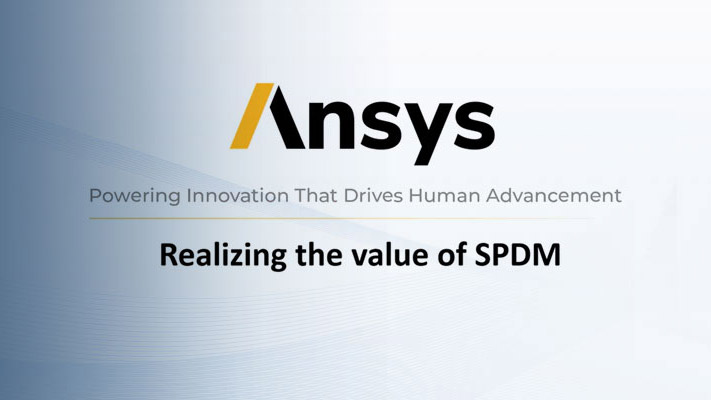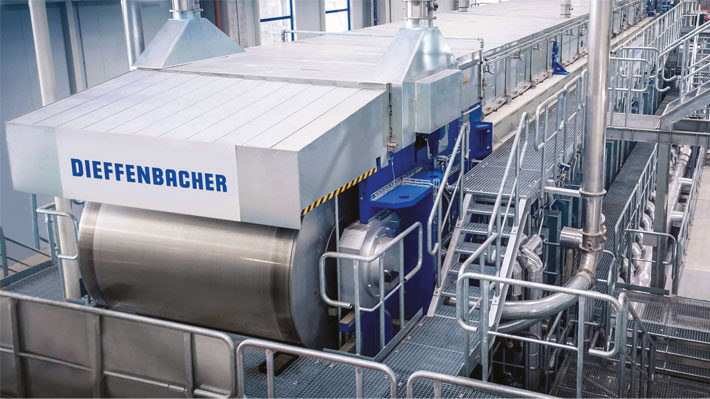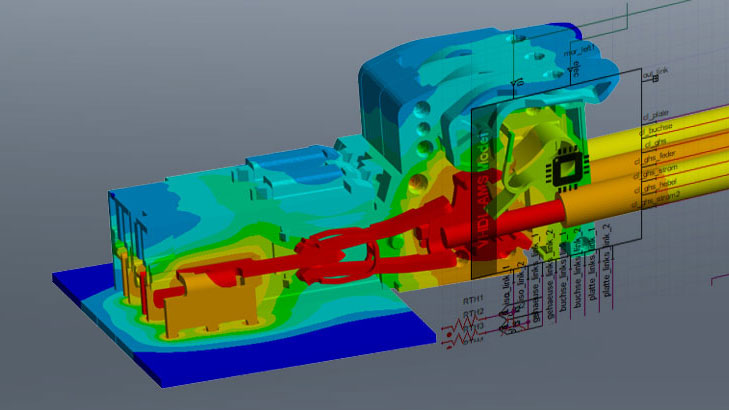Simulation Process and Data Management as a Strategic Lever in Digital Engineering
Marc Vidal
12.08.2025
Centralized data management, automation, and AI for greater efficiency, quality, and innovation power
SPDM is the key to efficient Digital Engineering. It creates centralized data structures, automates workflows, and enables AI-driven innovation. Companies benefit from higher quality, faster time-to-market, and a measurable ROI. In this article, you’ll learn how SPDM transforms processes and delivers real value.
Schalter sind standardisierte Serienprodukte. Das beschriebene Projekt wurde am Schaltwerk des Modells 506U durchgeführt | © JUNG
A consistent, data-driven product development process is essential for efficient engineering workflows. Digital engineering and simulation are well-established tools. However, manual, localized structures still dominate data and process management in this area, with communication often relying on emails or hallway conversations.
An SPDM system (Simulation and Process Data Management) organizes all CAE-relevant data, ensures traceability at all times, and enables secure, automated workflows. SPDM increases efficiency across all aspects of simulation use throughout the development process, delivering a sustainable return on investment (ROI).

Traceability of simulation processes and data through to the final report | © CADFEM
Added Value for Users and Companies
SPDM ensures centralized, consistent, and long-term traceable storage of all simulation data—accessible across locations and at any time. This “single source of truth” is essential for digital engineering, as it provides a reliable data foundation for early and informed decisions, eliminating redundant work and uncertainties. This accelerates innovation and increases development reliability.
SPDM facilitates cross-functional collaboration, enables quick data access, and preserves valuable expert knowledge. Structured data management makes knowledge independent of individuals. At the same time, SPDM reduces errors and increases process reliability through standardized, documented workflows.
SPDM as Risk Manager and Quality Assurance
SPDM is not only a driver of efficiency but also a key element in risk management. Complete traceability of calculations and simulation data enables precise and rapid analysis—for example, in product liability cases. Companies can always track which insights in digital engineering led to which decisions and why certain variants were pursued. This strengthens trust among customers, partners, and authorities in the development processes.
Return on Investment: Why SPDM Pays Off
SPDM delivers ROI through several factors:
- It immediately reduces communication effort and time spent on unproductive tasks such as data storage, searching, and ensuring data consistency.
- Structured data forms the basis for automation, creating a multiplier effect. This means fewer errors and shorter development cycles, which is a significant competitive advantage.
- Traceability of calculations and decision paths is essential for risk management, especially in product liability cases.
- As products and processes become more complex and development time shortens, methods like MBSE and AI gain importance in engineering.
SPDM provides the necessary data structure and traceability for input data and organizes the expected large volume of results.
Tip: Webinar “Realizing the Value of SPDM”
Learn how companies like Dieffenbacher and Enercon have successfully implemented SPDM and the benefits they’re seeing. Gain practical insights to optimize your simulation processes — watch now and unlock the full potential.

SPDM as the Foundation for Automation
SPDM and automation are inseparably linked in digital engineering. SPDM provides structured data and enables standardized processes. This allows for secure automation both at the simulation tool level as well as in workflows between stakeholders: standardizing data flows, automating simulations and evaluations, and minimizing manual interventions. The result is a consistent, efficient workflow with higher quality, fewer errors, and shorter time-to-market.
MBSE and SPDM: Digital Continuity in Systems Engineering
Model-Based Systems Engineering (MBSE) maps the entire system lifecycle—from requirements and architecture to verification—using models. SPDM provides the necessary simulation data, ensures traceability, and links system models with physical validation. Together, MBSE and SPDM enable a consistent, reusable, and high-quality digital development chain—a central goal in digital engineering.
Simulation Process and Data Management is far more than a data management tool—it is a strategic lever for successfully implementing Digital Engineering.
Artificial Intelligence Meets SPDM
SPDM is a key enabler for using artificial intelligence (AI) in product development: it provides the structured data foundation from which training data for AI is derived—to identify patterns, make predictions, or generate design suggestions. As AI generates many new data points used for further decisions, traceability becomes increasingly important. Many applications rely on automated use of AI algorithms. SPDM excels at organizing data and processes under the specific requirements of simulation data. This creates a robust, intelligent, and data-driven development process—a core element of digital engineering.
Case Study: SPDM at Dieffenbacher
At DIEFFENBACHER GmbH Maschinen- und Anlagenbau, a leading manufacturer of press systems and production plants, simulation tasks and geometries were previously exchanged via email. Data management relied on Excel and folder structures—resulting in manual effort, redundancies, and complex traceability. Management sought a solution to automatically synchronize simulation data, keep it up to date, and ensure traceability in the approval process.
With the introduction of Ansys Minerva as the SPDM system, CAE processes were consolidated, and an approval process was established. Automation integration accelerated recurring calculations by automatically transferring inputs from the SPDM-recorded simulation task as boundary conditions to the calculation model.
The solution simplifies communication between analysts, designers, and managers. Process reliability increases, manual steps are eliminated, and employees gain time for demanding tasks. All these factors contribute to a rapid ROI: the investment paid off within the first year.
How Dieffenbacher uses centralized data management with Ansys Minerva:
Read how the company is making processes more efficient and creating transparency!

Conclusion: SPDM as a Key Technology in Digital Engineering
Simulation process and data management is far more than a data management tool—it is a strategic lever for successfully implementing digital engineering. Through centralized organization and automation of simulation-related processes, SPDM lays the foundation for efficiency, quality, and innovation in product development. It combines operational excellence with strategic foresight by improving collaboration, minimizing risks, and enabling the integration of modern methods and technologies such as MBSE and AI. Companies that consistently use SPDM not only benefit from faster time-to-market but also secure long-term competitive advantages in an increasingly data-driven development environment.




